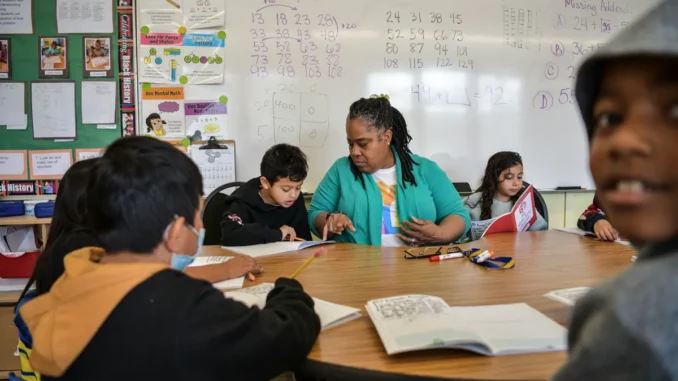
When California’s governors and legislators write state budgets, they begin with projecting how much revenue the state is likely to receive.
It’s a semi-educated guess that is often billions of dollars removed from the eventual reality, given the high level of volatility in the state’s taxation system.
With a revenue number in hand, officialdom then calculates how much of it must be allocated to public schools under Proposition 98, the 1988 ballot measure that governs financing of K-12 schools and community colleges.
It’s roughly 40%, but since the revenue assumption is shaky at best, Prop. 98’s complex formulas are subject to varying interpretations. The calculation also includes estimates of local property taxes, so the number that emerges for schools is also rather arbitrary.
Whatever the figure may be in any given year, it never precisely squares with reality, which then requires reconciliation in the next budgetary cycle. The 2024-25 budget that Gov. Gavin Newsom proposed this week exemplifies the annual exercise.
When he and the Legislature agreed on a 2023-24 budget last June, they decided that Prop. 98 would give schools, in property taxes and state aid, $110.6 billion in 2021-22, $107.4 billion in 2022-23, and $108.3 billion in 2023-24.
This week’s budget declares that those numbers are cumulatively $11.3 billion too high since revenues are running well under previous estimates. Meanwhile, the Legislature’s budget analyst, Gabe Petek, had calculated that they are $21 billion too high because his revenue estimates are lower than the governor’s.
The differing revenue estimates – and the equally divergent calculations of school financing – together account for most of the $30 billion-plus gap between Newsom’s estimate of a $38 billion deficit and Petek’s $68 billion estimate.
By tapping into a special reserve fund for schools, Newsom’s budget proposal makes up most of his $11.3 billion shortfall between what Prop. 98 requires and what school officials thought they would be getting over the three-year period, thereby shielding them from having to absorb big reductions in money they’ve already spent.
However, if Petek’s more pessimistic revenue estimate turns out to be closer to reality than Newsom’s, schools could take big hits and state officials would face pressure to change how schools are financed and how state aid, whatever the level, is allocated.
The latter generally is based on attendance – so much for each student, with bonus allocations to school districts with substantial numbers of English learners or students from poor households to help them overcome a chronic achievement gap in basic academic skills.
Newsom’s proposed budget projects that K-12 schools will receive $126.8 billion in 2024-25 from local property taxes, state aid and federal funds, or an average of $23,519 per student.
That’s double what it was a decade ago, but there’s no indication that the sharp increase in school spending has resulted in a commensurate increase in academic achievement. The state’s own competency tests, as well as nationwide tests, show little, if any, overall improvement and the achievement gap is as wide as ever.
Per-pupil financing is likely to increase in the years ahead because public school enrollment is declining and Prop. 98’s formula is largely based on revenue, regardless of how many students are in the system.
K-12 enrollment peaked at 6.3 million in 2004, is now below 6 million and is expected to drop to under 5 million in the next decade due to low birthrates and the state’s overall population decline.
It will test whether money is truly the key to educational achievement, as the education establishment contends, or other factors are preventing California kids from realizing their potential.



Be the first to comment